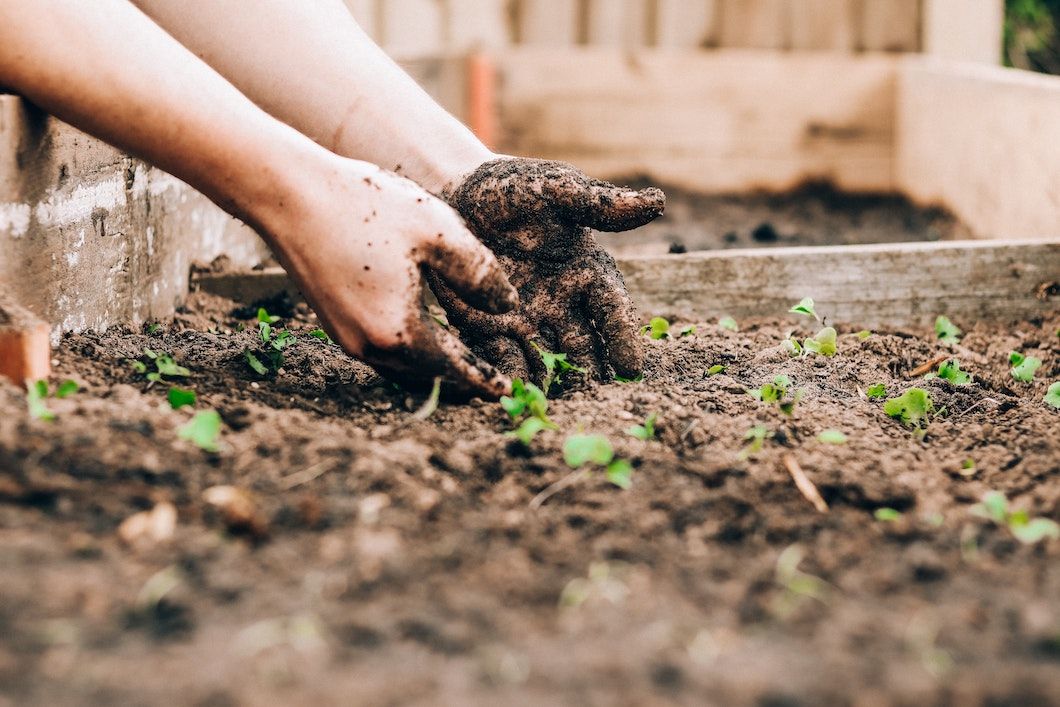Allotments: the ultimate guide to growing your own food for beginners
updated on Aug 4, 2022

Allotments exist to offer everyone the opportunity to grow their own food, so, what do you need to know?
If you’ve never stepped foot on an allotment before, at the very least you’ve probably passed one by. Squeezed in between housing estates in the centre of cities, on the outskirts of towns, and down spiralling pathways in villages, an estimated 330,000 allotments across the UK offer local residents their own plot of land where they can grow their own food, cultivating a ‘good life’ while they’re at it.
And, post-lockdown, interest in allotments is higher than ever, with the National Allotment Society revealing that 40% of English councils responding to a survey reported a ‘significant uplift’ in applications to join waiting lists, with one council – Hyndburn, in Lancashire – seeing an astounding 300% increase.
It’s easy to understand why this trend is happening. In lockdown, many of us slowed our pace of life right down and were forced to reconnect with the simple things in life. Add to that a desire to ‘eat local’, to understand more about where our food comes from and, importantly, the incredible wellbeing benefit of being out in nature that many of us have experienced first-hand, and you have the perfect conditions for the self-sufficient dream to blossom.
The good news is that, in theory, there’s enough to go around. While many may choose to grow food in their gardens – in 1908, the Small Holdings and Allotments Act came into force, meaning that local authorities must provide sufficient allotment space for the public to grow food where there is a demand for it. Updated in 1925 to protect these spaces further, this legislation is still very much active today, and preserves citizens’ rights to grow their own food, holding the door open to anyone who wants to have a go.
While waiting lists can be rather lengthy, sometimes stretching up to 18 months, costs can be relatively low, ranging between £25–£125 per year depending on the location and facilities on site. Total newbies work side-by-side with expert old-timers, and the community spirit that flourishes on allotments is second to none, as knowledge is passed around without hesitation, plant swaps will have you tucking into new experiences, and annual shows will bring out a healthy dose of competition.

Sounds appealing? Here’s a quick run-down of three key things to consider:
1. How much land are we talkin’?
Allotments are traditionally measured in ‘poles’ – also referred to as ‘perches’ or ‘rods’ – which is an ancient measurement that dates back to Anglo-Saxon times. Generally speaking, the standard allotment size is 10 poles, which is the equivalent of 250 square metres – about the size of a doubles tennis court. It’s a fair bit of land, but if you feel intimidated by that, there are a number of options available. You could share the plot with someone you know, or you could reach out to others who are on the waiting list. Or, you can cover up some of your plot with weed-suppressant material, and work on it bit by bit until you get the hang of things. Be warned though, most allotment contracts will stipulate how much of your allotment must be in use at any given time, often setting your goals such as one-quarter in use within the first three months, half in your first year, and so on. All in all, don’t be intimidated, but do be prepared.
2. Time is of the essence
Now you’ve got an idea of the size of the plot, it’s worth considering how much time you will be able to devote to working on it. Home-grown food really is a labour of love; you get out what you put in, which is what makes it so special. With that in mind, it’s fair to say that allotments demand a lot of care and attention. In the summer months, you might find you need to visit your plot almost every day to keep on top of watering and weeding, and even off-season you’ll want to be visiting a few times a week to make sure everything is maintained. Most allotments will also have regular inspections run by the council. You’ll be given warning, but it means you are agreeing to keeping a neat and tidy plot at all times. Of course, if you’re full of enthusiasm and find bucket-loads of joy in the work, this will be no problem, but do consider how this new endeavour will slot into your life.
3. All the gear
Part of the philosophy of allotments is DIY, and finding creative solutions to problems. These aren’t ornate gardens, they’re functional and productive, and for that reason, you shouldn’t have to pour a load of money into getting them going. You can find a lot of gardening equipment on second-hand sites such as Facebook Marketplace, Gumtree, and eBay – you might even inherit some left-over equipment from the plot’s previous owner. Seeds are relatively inexpensive, and each allotment usually has a ‘seed club’, where you can buy packs at a discounted price; what’s more, plant swaps are common, and you can usually find people selling seedlings and young plants at car-boot and jumble sales.
Up for the challenge? Get back to your roots and find out more by searching for allotments in your area. Apply for a plot by heading to gov.uk/apply-allotment. You never know what might come to fruition.
If you would like more advice, visit nutritionist resource or speak to a qualified nutritionist.

